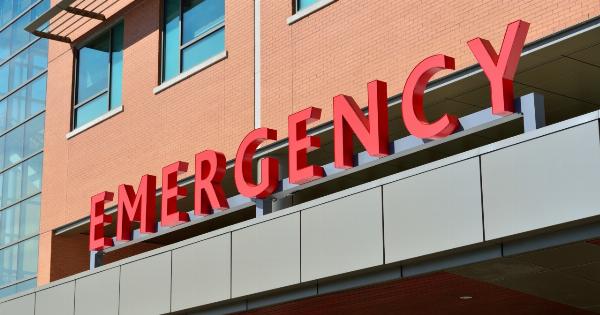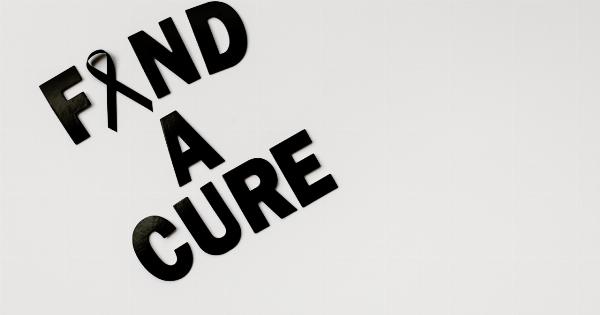Esophageal dysphagia is a medical condition characterized by difficulty swallowing food and liquids. It is caused by abnormalities in the esophagus, the muscular tube that connects the mouth to the stomach.
While occasional difficulty swallowing is normal, persistent issues can be indicative of an underlying problem.
Causes of Esophageal Dysphagia
There are several possible causes of esophageal dysphagia, including:.
-
Structural Abnormalities
Structural abnormalities in the esophagus, such as strictures (narrowing of the esophagus), diverticula (small pouches that develop in the lining of the esophagus), or tumors, can cause difficulty swallowing.
These abnormalities may be congenital or developed over time.
-
Esophageal Spasms
Esophageal spasms occur when the muscles in the esophagus contract abnormally. These spasms can cause pain and difficulty swallowing.
The exact cause of esophageal spasms is unknown, but they may be linked to conditions such as gastroesophageal reflux disease (GERD) or anxiety.
-
Achalasia
Achalasia is a rare condition where the lower esophageal sphincter (LES) fails to relax, causing a blockage in the esophagus. This blockage makes it difficult for food and liquids to pass into the stomach.
The exact cause of achalasia is unknown, but it is thought to be an autoimmune condition.
-
Gastroesophageal Reflux Disease (GERD)
GERD occurs when stomach acid flows back into the esophagus, causing irritation and inflammation. This can result in difficulty swallowing, as well as heartburn and regurgitation. Untreated GERD can lead to the development of strictures.
-
Eosinophilic Esophagitis
Eosinophilic esophagitis is a chronic immune system disease characterized by inflammation of the esophagus. It is often triggered by allergies or sensitivities to certain foods.
The inflammation can cause narrowing of the esophagus, leading to difficulty swallowing.
Symptoms of Esophageal Dysphagia
The symptoms of esophageal dysphagia can vary depending on the underlying cause. Common symptoms include:.
-
Difficulty Swallowing
Feeling as though food or liquids are getting stuck in the throat or chest, causing discomfort or pain.
-
Pain or Discomfort
Experiencing pain or discomfort while swallowing, which may be localized in the chest or throat.
-
Regurgitation
Spontaneous return of partially digested food or liquids from the stomach to the mouth.
-
Weight Loss
Unintentional weight loss may occur due to reduced food intake caused by difficulty swallowing.
-
Heartburn
Burning sensation in the chest, often accompanied by a sour or bitter taste in the mouth, can indicate GERD as an underlying cause.
Diagnosing Esophageal Dysphagia
Diagnosing esophageal dysphagia involves a thorough evaluation of symptoms and medical history, followed by various tests and procedures. These may include:.
-
Barium Swallow
A barium swallow is a type of X-ray that helps visualize the esophagus. The patient swallows a liquid containing barium, which coats the esophagus, making abnormalities more visible on the X-ray.
-
Endoscopy
An endoscope, a long, flexible tube with a camera on the end, is passed through the mouth and into the esophagus. This allows the doctor to examine the lining of the esophagus and detect any abnormalities.
-
Esophageal Manometry
Esophageal manometry measures the strength and coordination of the contractions in the esophagus. It involves inserting a thin tube into the nose or mouth and down into the esophagus to measure the pressure changes.
-
Biopsy
A biopsy may be performed during an endoscopy to collect tissue samples for further analysis and to rule out conditions like eosinophilic esophagitis or tumors.
-
pH Monitoring
This test measures the amount of acid in the esophagus over a 24-hour period. It can help identify acid reflux as a cause of dysphagia.
Treatment for Esophageal Dysphagia
Treatment for esophageal dysphagia depends on the underlying cause and severity of the condition. Common treatment options include:.
-
Dietary Modifications
Adjusting the texture and consistency of foods to make swallowing easier, such as consuming softer foods or pureeing meals.
-
Medications
Prescription medications may be prescribed to treat conditions like GERD or esophageal spasms.
-
Dilation
Dilation involves stretching the esophagus using an endoscope or a series of dilators to widen any strictures or narrow areas.
-
Surgery
In severe cases, surgical intervention may be required to correct structural abnormalities or remove tumors.
-
Behavioral Therapy
For individuals with esophageal dysphagia caused by anxiety, therapy techniques such as relaxation exercises or cognitive-behavioral therapy may be helpful.
Living with Esophageal Dysphagia
Living with esophageal dysphagia can be challenging, but there are strategies that can help manage the condition:.
-
Eating Slowly and Mindfully
Taking time to chew food thoroughly and being mindful of each swallow can aid in the swallowing process.
-
Small, Frequent Meals
Opting for smaller, more frequent meals can help prevent overwhelming the esophagus and reduce the likelihood of discomfort.
-
Posture and Positioning
Sitting upright and maintaining good posture while eating can facilitate the movement of food through the esophagus.
-
Avoiding Trigger Foods
Avoiding foods that exacerbate symptoms, such as spicy or acidic foods, can help minimize discomfort.
-
Seeking Support
Joining support groups or seeking professional counseling can provide emotional support and valuable coping strategies.
Consult a Healthcare Professional
If you experience persistent difficulty swallowing or other symptoms of esophageal dysphagia, it is essential to consult a healthcare professional for an accurate diagnosis and appropriate treatment.
Early intervention can help manage the condition effectively and improve your quality of life.


























